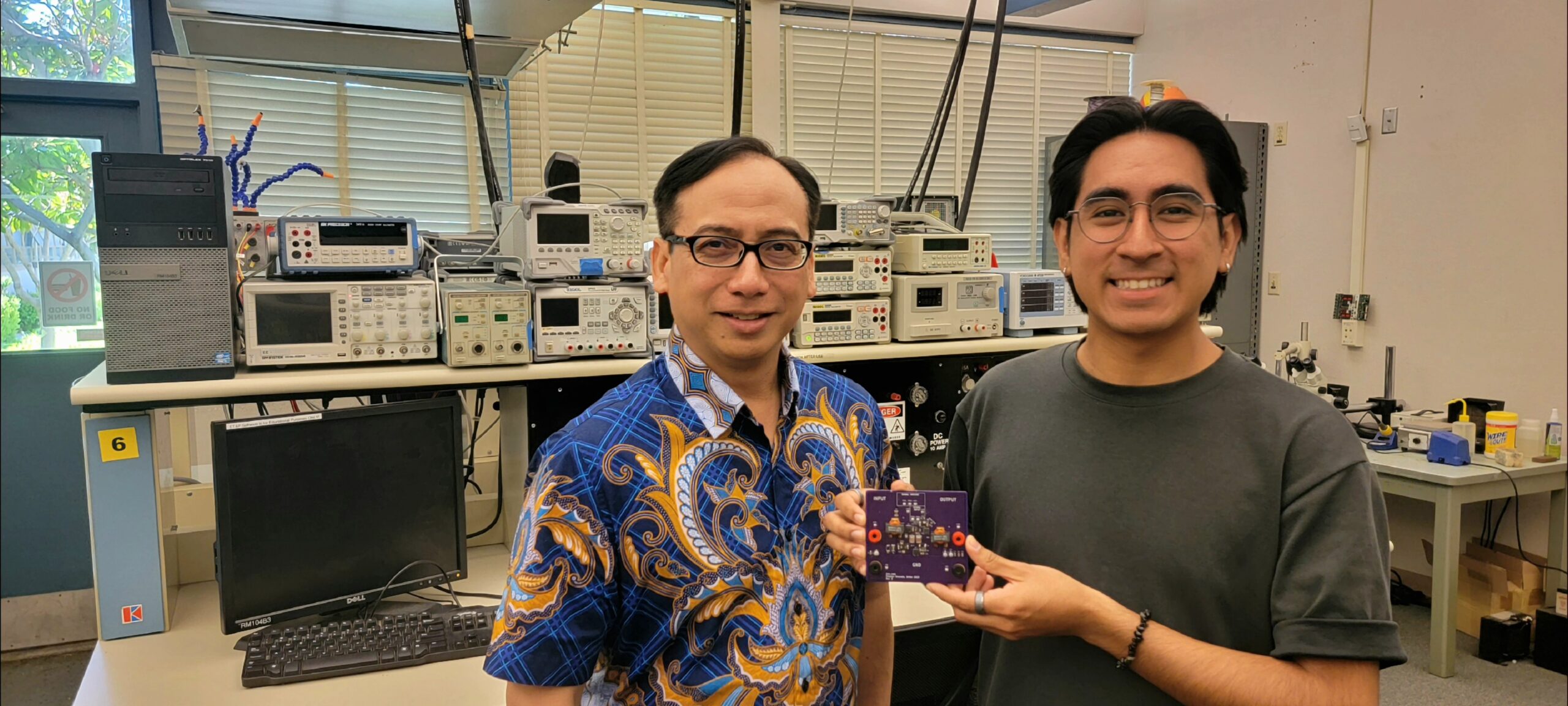Imagine charging your cellphone more efficiently and using less energy. This vision has become a patented reality thanks to a collaboration between electrical engineering Professor Taufik and his former student at Cal Poly.
Their breakthrough – a novel method for energy conversion that minimizes energy consumption and maximizes performance – has been patented and aims to revolutionize how we power our devices, potentially reducing consumer costs.
“That is the exciting thing about this field: getting from point A to point B in the most efficient way,” said Taufik, who has been teaching at Cal Poly for 25 years. “And the end result? You pay less money.”
The journey to secure intellectual property rights for the zero-voltage switching hybrid voltage divider, or ZVS-HVD, began with a conversation between Taufik and Owen Jong, a 2012 electrical engineering graduate.
“He had taken one of my classes, and during a discussion about reducing energy conversion costs – a challenge that had arisen in our field – we came up with the idea,” Taufik recounted. “He is also listed on the patent.”
With a big smile, Taufik added, “I wish I had a patent when I was a student!”
•••
The third intellectual property right granted to Taufik during his tenure at Cal Poly, facilitated by the Division of Research, was issued in July 2023.
“It’s incredibly rewarding to have an idea recognized by the U.S. Patent and Trademark Office, and I’ve been fortunate to work with so many bright students,” he said.
All three of Taufik’s patents list students as co-inventors, a testament to the collaborative spirit the professor fosters in his work.
“Our method isn’t new, but it’s the way we apply it that sets us apart,” he said. “While many have tried similar approaches, I believe ours is more efficient and effective.”
Devices such as cellphones and laptops require low-voltage DC power to function, yet power from wall outlets is high-voltage AC. This necessitates first converting AC power to DC, and then further converting it from high-voltage DC to the low-voltage DC these devices need. Each conversion step consumes energy.
The invention streamlines the process by eliminating the need for more control circuits that are typically required to maintain constant voltage output in devices like USB ports. The cost-effective approach not only ensures stable voltage output but also allows for flexibility in adjusting voltage ratios.
Additionally, the circuit is bidirectional, managing energy flow both into and out of a device, such as during battery charging and discharging. This removes the need for separate circuits for each direction, simplifying the design.
“At the end of the day, our approach reduces costs significantly,” Taufik said. “By using smaller, more efficient converters, we lower manufacturing expenses, making the devices less costly for consumers. This results in savings from both the purchase price and ongoing energy consumption.”
•••
Taufik’s invention will work with consumer electronics and power supplies but not on a utility scale.
“We have a prototype ready, and if a company shows interest, we have a circuit available,” he said. “Cal Poly’s proximity to Silicon Valley positions us well to connect with potential partners, which could include any power semiconductor company.”
Since 2017, Taufik has collaborated with three electrical engineering students on his project. This fall, a fourth student will join to further optimize the design and enhance the power output.
“I’m excited discovering new ways to solve real-world problems,” Taufik said. “Working with students helps unlock the keys to overcoming these challenges.”
By Emily Slater
About The Noyce School of Applied Computing
The Noyce School of Applied Computing is home to the first interdisciplinary school of its kind at Cal Poly in San Luis Obispo thanks to a transformative $60 million gift from the Robert N. Noyce Trust.
Housed within the College of Engineering, The Noyce School of Applied Computing combines three departments — Electrical Engineering, Computer Science and Software Engineering, and Computer Engineering — with Statistics joining as an affiliate, paving the way for students and faculty using computer principles, concepts and technologies to address real-world problems.


